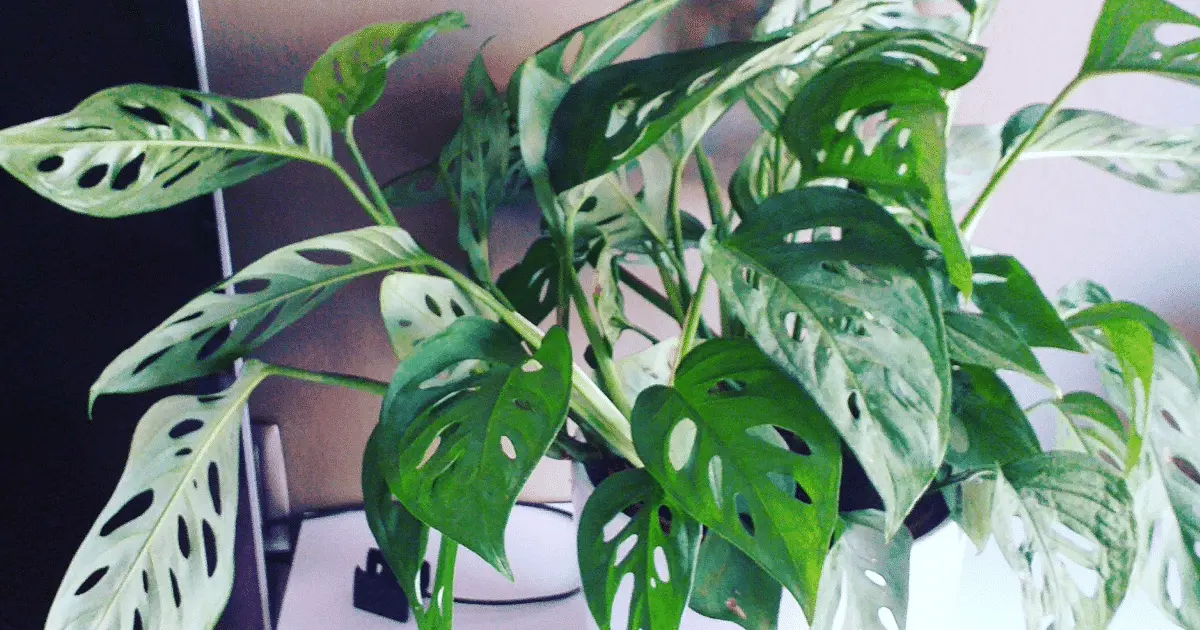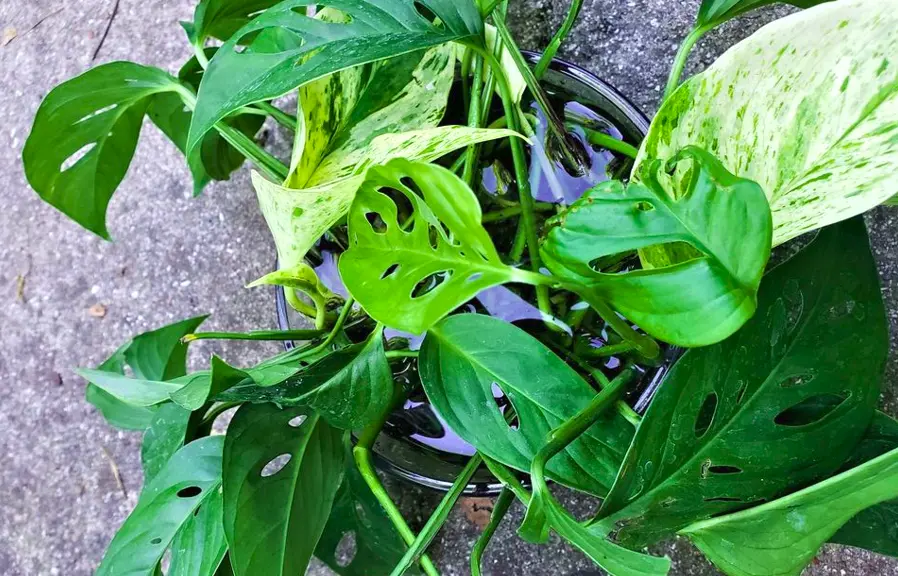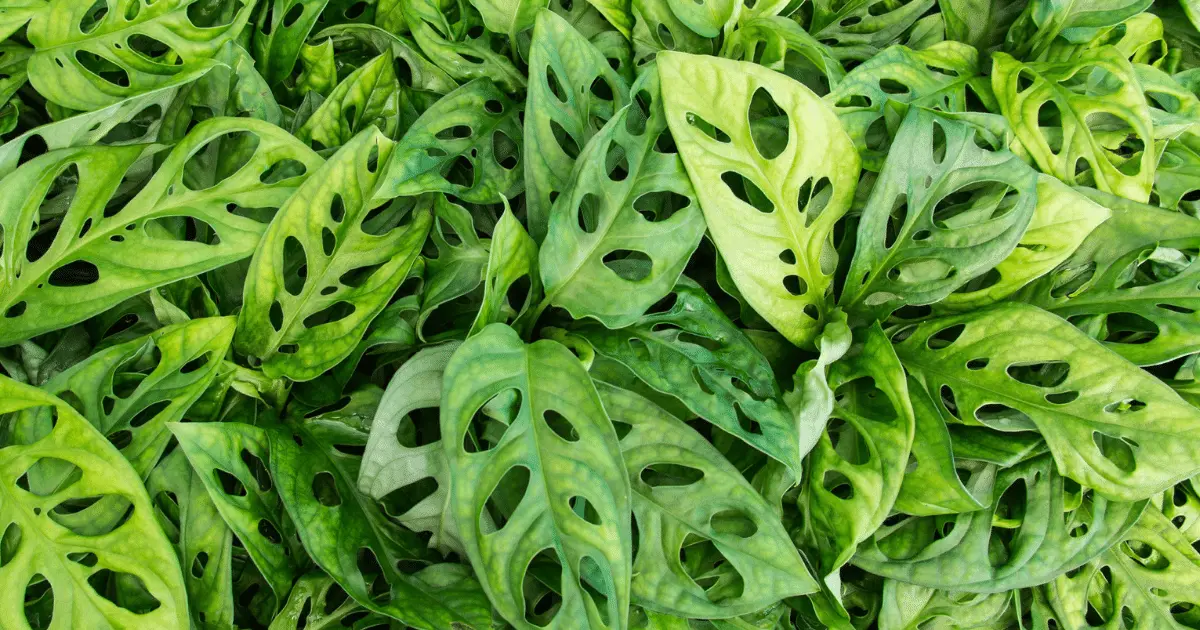A true sight to behold, variegated Adansonii shrubs (Adansonia digitata ‘Variegata’) are amazing additions to any garden or landscape. The adansonii grows best in warm climates, but with the right care and attention, they can also survive well in temperate regions of the world, including the US and Europe.
A beautiful variegated tropical plant, adansonii originates from the West Indies and southern Florida, where it’s grown as an ornamental plant. Unfortunately, these trees are slow-growing and need extra special care to thrive.
In this article, we’ll go over the various ways of growing and caring for variegated adansonii.
What is a Variegated Adansonii?

Variegated adansonii, or monstera adansonii, is a palm tree native to Southeast Asia. It grows best in tropical climates with plenty of sunshine; however, it is also adaptable to temperate climates. This plant is grown mainly indoors or outdoors as an ornamental plant because it has many uses. It can be used as a decorative landscape plant, a windbreak, or a screening plant because the leaves are larger than most other plants.
The variegated adansonii can be cultivated by taking plant cuttings and putting them in water. Roots will emerge from the nodes within a few weeks, followed by new leaves. The variegated adansonii prefers indirect bright sunshine, temperatures ranging from 19°C to 26°C, and humidity levels exceeding 50%. They will thrive with fertilization every two weeks during the growing season, repotting every two years, and weekly watering.
Where Do They Come From?
The variegated Adansonii originated in Africa but can also be found in America. These plants are not cold or hardy, so they must be grown indoors or in greenhouses. They prefer bright indirect light but should not be exposed to direct sunlight. They will grow best if you keep their soil moist at all times, but there is no need to soak the plant.
The Different Adansonii Varieties
Monstera adansonii is a distinctive and popular home plant that is easy to propagate and care for. But did you know that there are various distinct varieties of adansonii that will make your collection stand out? Several species come in various colors of green.
Some of these varieties include:
Monstera Adansonii

Also known as Swiss Cheese Vine, this is the most frequent form of Monstera Adansonii that you may encounter. It has shiny, big leaves with holes in them. The leaves develop into a pointed oval form and become deeper green as they age. The more holes the leaves have, the more intense, indirect light it gets.
Monstera Adansonii Friedrichsthalii

Monstera friedrichsthalii is not dissimilar to Monstera adansonii; in fact, they are the same plant. This is a case of several names being used depending on the age of the plant. When the leaves are longer and bigger, the plant is said to be friedrichsthalii.
Monstera Adansonii Laniata

This is a variant of Adansonii, and the leaves are nearly identical in form and size, with one major change. Laniata leaves are typically glossy green and comparable in shape and size. However, you need to get up close and personal with them to be able to distinguish them.
Monstera Adansonii Archipelago
The archipelago is another variegated cultivar, to the point that its stems and leaves are partially or fully white. The variant is more sensitive because it lacks pigment and cannot generate much chlorophyll. They are quite rare; however, you can find them online by paying several hundred dollars.
Monstera Obliqua

The Obliqua has the most holes of any Monstera adansonii variety. The holes in the leaves are significantly bigger, with just extremely thin fragments of leaf keeping them together. Because only thin, ‘stringy’ parts hold the leaves together, they nearly always seem wilted. It’s also a considerably smaller plant since the leaf surface area is so little, making it much more difficult to synthesize chlorophyll. Because this kind is exceptionally uncommon, it is more expensive.
How to Propagate Variegated Adansonii
Stem cuttings are a good way to propagate variegated adansonii. In addition, you can root the stem cuttings in both water and soil mediums.
Method 1: Rooting in Water
The steps below will help you propagate the stem cutting in water.
- Fill a clear jar or glass halfway with clean, room-temperature water. If you use tap water, keep it in the jar for a full day to allow the water’s contaminants (such as chlorine) to evaporate.
- Stick the clipped stem into the jar of water. Take care not to drown it in the leaves.
- To keep the water clean and fresh, change it when it gets yellowish or once a week.
- While you wait for the roots to grow in the water, get a container or pot with drainage holes at the bottom.
- Fill the container or pot with the appropriate soil mix.
- After 2 to 3 weeks, roots will appear beneath the stem.
- When the roots reach 3 to 5 inches in length, it’s time to move the stem to the soil-filled container.
Method 2: Rooting in Soil
The steps below will help you propagate the stem cutting in soil.
- Prepare your container or pot by drilling a drainage hole in the bottom.
- Fill the pot or container with the appropriate soil mix, but wait before fertilizing it.
- Dig a 2-inch hole in the soil and insert the stem inside. This should be after a week of cutting and creating callouses on the stem.
- Tuck it in tightly and harden it up by adding more dirt.
- Make the stem stand extremely tall if some support is required by adding a slender branch or a stick pole.
- Don’t go too deep while putting the stem in the dirt; be careful since the roots are quite delicate. About 2 inches below the surface is sufficient.
- Tuck it in tightly and harden it up by adding more dirt.
Caring for Variegated Adansonii
Variegated adansonii are beautiful specimens that can make a gorgeous statement in your garden or outdoor space. However, they do require a little more care than other plants, and here are tips on how to care for them:
- Variegated adansonii trees need at least six hours of sun per day, although the brighter the sunlight, the more variegation will be present.
- They should be fertilized with an organic fertilizer once every month during their growing season. During the growth season, feed your variegated adansonii twice per month with a balanced, liquid fertilizer with an NPK ratio of 20:20:20. However, avoid fertilizing the plant throughout the cold months. And never fertilize it immediately after re-potting it.
- When repotting, ensure you use a potting mix made specifically for these types of plants. Refrain from repotting too often, which may cause over-potting, leading to root rot.
- For added protection, wrap the roots in wet sphagnum moss before covering them up with soil.
- Remind dry the leaves with a wet towel to keep them healthy and clean.
- Raise the humidity and temperature to acclimate your variegated adansonii.
The main thing you want when caring for a variegated adansonii is patience because they’re slow growers, and like most things worth having, they take time.
Pests and Diseases
The variegated adansonii is a beautiful plant with a delicate appearance but can be prone to pests and diseases. The most common pests found on variegated adansonii are mealybugs and aphids. These pests will leave behind a sticky substance on the leaves that cause black sooty mold to form. To kill these pests, spray the plant with neem oil or insecticidal soap.
The most common disease found on variegated adansonii is powdery mildew. Powdery mildew appears as white, fluffy growths on the leaf’s surface. If this occurs, avoid touching it and try spraying the plant with hydrogen peroxide diluted in water.
Variegated adansonii is a beautiful plant that can add much life to your home. They’re easy enough to grow indoors, but they need care so they don’t die out. Give them plenty of water, light, and nutrients, and you’ll have an amazing addition to your home in no time!
